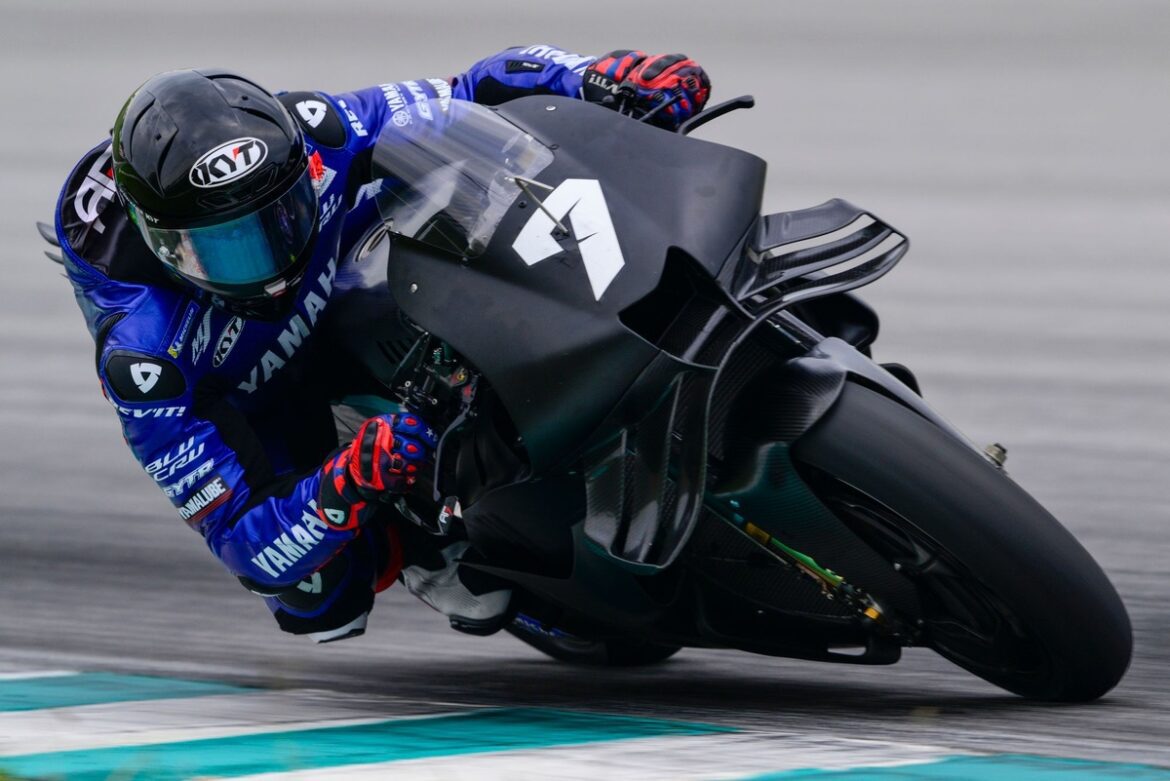Yamaha’s Engine Development: A Look at the Current State of MotoGP Performance
Yamaha’s presence in MotoGP has always been a source of intrigue and anticipation, particularly as the competition becomes fiercer with each passing season. The latest developments surrounding Yamaha’s engine performance have sparked significant discussions among fans and analysts alike. As the team faces challenges on the racetrack, the focus has shifted to their engine strategy, especially in light of recent events at various Grand Prix venues.
Challenges on the Track: A Closer Look at Yamaha’s Performance
The stark contrast between the performance of Yamaha motorcycles and their competitors has been evident in recent races. At Silverstone, for instance, the Yamaha bikes appeared to struggle significantly on the straights, falling behind the powerful Ducati machines. This pattern continued during the previous year’s Aragon Grand Prix, where Fabio Quartararo found himself overtaken by Francesco Bagnaia as he surged through the field. Such instances highlight a pressing need for Yamaha to reassess its engine configuration.
As Yamaha delves into the intricacies of its engine design, it is clear that enhancing straight-line speed and rear grip is paramount. The introduction of a new V4 engine, intended to replace the current inline configuration, has been a topic of extensive discussion. While this new engine design has undergone preliminary testing, its public testing remains limited, leaving many questions unanswered about its potential impact on the team’s performance.
Insights from Test Rider Augusto Fernandez
In a recent test session at the Aragon track, Yamaha’s test rider Augusto Fernandez provided insights into the ongoing engine development. When asked about the engines being tested, he confirmed, “We have two engines.” He emphasized the importance of evaluating both configurations to identify which could yield better results. “I don’t know which one will be better, but the plan is that we have two engines to try and let’s see if we have some benefits,” he stated.
Fernandez clarified that the focus for the test session was on the inline engine, as the V4 engine was not part of this particular testing phase. He said, “The V4 project, as I said, won’t be here, not even on Monday.” This indicates that while Yamaha is exploring new possibilities, the current priority lies in refining the existing inline engine.
Quartararo’s Perspective on Yamaha’s Progress
Fabio Quartararo, the reigning champion and a key figure in Yamaha’s racing efforts, has been vocal about the challenges faced by the team over the past season. Reflecting on the previous year, he stated, “Last year we were slow everywhere,” highlighting the team’s struggles in both race conditions and qualifying sessions. He acknowledged the recent improvements made in terms of one-lap performance, which are critical for competitive racing.
Despite these advancements, Quartararo pointed out persistent issues, particularly with electronics and tire temperature management. “We struggle a little bit with electronics and the temperature of the rear tire,” he noted. This feedback underscores the complexities of motorcycle racing, where even minor technical difficulties can significantly impact overall performance.
The Mystery Surrounding the New Engine
When the topic of the new V4 engine arose, Quartararo maintained an air of secrecy, stating, “We will try a new engine on Monday then I don’t know the other pieces.” His comments reflect a strategic approach to testing, suggesting that while the team is aware of the need for improvement, specific details about the new engine’s capabilities remain closely guarded.
Quartararo’s playful response, “We don’t know, it’s a surprise!” when pressed for further information, indicates a sense of optimism and curiosity about the upcoming developments. This attitude is vital for a team aiming to reclaim its competitive edge in the high-stakes environment of MotoGP.
The Need for Improved Engine Performance
As Yamaha continues to focus on enhancing its engine performance, the overarching goal is to achieve a more competitive motorcycle. The current inline engine has shown potential, but the broader vision includes a successful transition to the V4 configuration, which promises to address some of the limitations experienced in previous races.
Team management understands that the MotoGP landscape is constantly evolving, with rival teams making significant strides in technology and performance. Therefore, investing in engine development is not just a matter of preference; it is a necessity to remain relevant in the championship battle.
The Road Ahead: Balancing Tradition with Innovation
Yamaha’s rich history in MotoGP has been built on a foundation of innovation and performance. However, the challenge lies in balancing traditional engineering practices with the demands of modern racing technology. The journey toward developing the V4 engine will require meticulous planning, extensive testing, and a willingness to adapt to the ever-changing dynamics of the sport.
As Yamaha navigates this path, collaboration among riders, engineers, and management will be crucial. Open communication and a shared vision will allow the team to harness the strengths of both the inline and V4 engines, ultimately leading to a more competitive package for the upcoming seasons.
Conclusion: A New Chapter for Yamaha in MotoGP
While the immediate focus remains on refining the inline engine, the anticipation surrounding the V4 project adds an exciting layer to Yamaha’s narrative in MotoGP. As the team continues to push the boundaries of performance and innovation, fans eagerly await the next chapter in Yamaha’s storied racing history. The combination of strategic testing, rider feedback, and engineering prowess will be pivotal in determining Yamaha’s trajectory in the competitive landscape of MotoGP.
In summary, Yamaha’s quest for improved engine performance reflects the broader challenges faced by teams in the high-octane world of MotoGP. With a commitment to continuous improvement and innovation, Yamaha aims to regain its position as a frontrunner in the championship, ensuring that fans can expect thrilling races and fierce competition in the seasons to come.
